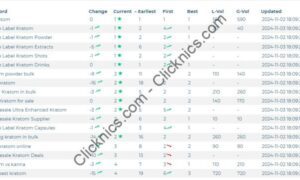Banking is evolving faster than ever before. This isn’t even just about slick apps or cryptocurrency conversation. But behind the scenes, sophisticated core banking systems are quietly changing the financial landscape. For investors, knowing this hidden layer of technology is no longer optional. It can mean distinguishing between identifying a winner and investing in a future problem. Here’s why understanding core banking can help you make better investment decisions.
Why Core Banking Systems Matter More Than Ever ?
Every modern bank is built around its core banking system, which is the technology that handles accounts, payments, loans, and records. Consider it the engine room that keeps everything going. Customers now want fast access to services, and authorities are increasing standards, so outdated systems cannot keep up. Modern core banking solution technology allows banks to scale internationally, provide 24-hour service, and quickly adjust to changing market demands. If a financial institution cannot adapt quickly, it is at risk, which might affect your investment results.
Old vs New — The Investment Risk Hidden in Legacy Systems
Many traditional banks continue to use decades-old technologies. Although they may appear flawless on the surface, these systems can be sluggish, bulky, and weak at the backend. Legacy technology slows banks’ ability to introduce new products, presents security flaws, and raises maintenance expenses. Investors need to understand that a flashy mobile app cannot solve complex, systemic issues. Companies that rely on legacy systems suffer operational risks, regulatory pressure, and competitive challenges. Investing without doing any maintenance is similar to purchasing a secondhand automobile without doing any maintenance.
The Rise of Core Banking-as-a-Service (BaaS)
Core Banking-as-a-Service is a model that is revolutionizing the traditional system. Instead of developing and managing their sophisticated systems, banks and fintechs can now rent powerful, cloud-based core banking platforms. These platforms are scalable, adaptable, and updated often to satisfy legal requirements. BaaS boosts time-to-market, lowers costs, and makes it possible for smaller businesses to compete. Businesses that use BaaS are more flexible, economical, and prepared to grow than those constrained by antiquated IT infrastructure.
What Investors Should Look For
Knowing what solid core banking technology entails might help you make better investment decisions. Here’s a basic checklist:
- Cloud-Native Architecture. Modern platforms are designed with the cloud in mind, rather than being retrofitted. This provides flexibility, security, and the ability to easily upgrade.
- API-Driven Design. Systems that use APIs (Application Programming Interfaces) can readily link to other platforms, encouraging innovation and collaboration with partners.
- Scalability Plan. Businesses should have well-defined plans for growing their operations without undergoing significant redesigns or accruing excessive debt from technology.
- Regulatory Compliance Tech. Effective core systems are designed with compliance in mind, making it simpler and less expensive to satisfy changing regulatory requirements.
Banks that rely on patch updates, outdated systems, or nebulous “digital transformation” claims without a defined tech plan should be avoided. These may be symptoms of more serious issues later on.
Conclusion
Understanding basic banking technology has become critical for investors, not just IT people. The effectiveness of a company’s basic systems can have a significant impact on its growth, stability, and future success. Remember that the details are just as important as the news.



































